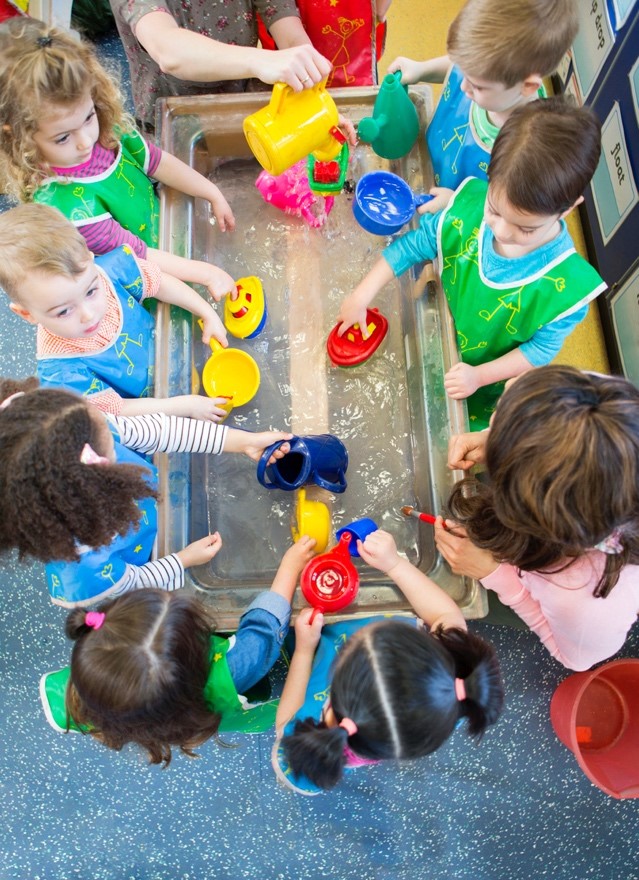A sensory room is a specially designed area that offers students a variety of sensory experiences. It serves as an accommodation for some students and may also be known as a Multi-Sensory Room (MSE) or Snoozelen Room. Sensory rooms first emerged in the Netherlands during the 1970s and have since gained popularity in the education community as a means of promoting a child’s overall well-being.

Sensory rooms are not exclusively for students with disabilities or those who have difficulty regulating their emotions. While these communities can benefit greatly from sensory interventions, all students can benefit from the calming or alerting effects of these rooms.
When creating a Sensory Room, it is important to have a good understanding of how people process sensory input, which is also known as sensory processing. Sensory Processing Disorder occurs when a person is unable to regulate sensory stimuli and environmental factors can affect sensory integration. People who don’t have sensory processing difficulties are able to integrate information from their senses and use it to engage and focus.
Children who have challenges related to processing sensory information often also have difficulty finishing tasks —at home or at school— that require them to sit quietly, pay attention to an instructor, or connect well socially with their peers.(1)
When designing a Sensory Room, it is essential to understand hypersensitivity and hyposensitivity. Hypersensitivity is when an individual over-responds to sensory stimuli such as sounds, lights, and excessive visual stimuli; hyposensitivity refers to an under-response to specific stimuli. It is crucial to consider the sensory interventions needed for different types of students when creating a sensory room.
Research has shown that sensory interventions are critical in helping students manage their emotions and attention. By providing a sensory environment, students can improve their ability to regulate and optimize their learning and success. A Sensory Room can provide students with a much-needed break and a chance to recharge before returning to class. Studies suggest that creating a sensory room for students with disabilities can improve their ability to retain information, communicate effectively, increase attention, and positively interact with their peers.
When creating a Sensory Room, it is crucial to tailor it to the specific needs of your students. The space should cater to the preferences of the children using it and avoid unnecessary clutter. Proper organization with designated storage areas is also essential. The primary focus of the room should be therapeutic, and it’s important to keep in mind that each student’s objectives may differ and should be considered during the design process.

Individualization is important for a sensory room intervention to be effective in improving behavior and attention for students with autism.(2) Designing a sensory environment is a collaborative effort that involves various key players. The team should comprise the student’s teachers, occupational therapists, speech therapists, and physical therapists. Their valuable insights will help in creating an effective and meaningful space by suggesting appropriate designs and recommending suitable equipment.
Purchase Recommendations to Create Sensory Rooms
When setting up a sensory room there are seven sensory processing systems to consider: sight, hearing, touch, smell, vestibular, proprioception, and interoception. When planning the area, it’s crucial to think about whether it will be used to soothe or invigorate a student.
Sight
When it comes to the sense of sight, there are certain stimuli that could be helpful. It’s important to have adjustable lighting in the room as different students have different preferences. For instance, those who seek a calm environment may prefer dim lighting while those who need to stay alert may require bright lighting. It’s also suggested that natural light is beneficial. Materials such as lava lamps, fiber optic lighting, projectors, bubble tubes, sensory view bottles, and light panels could be great additions to enhance the sense of sight.
Hearing
When it comes to the sense of hearing, certain sounds can be helpful. First, it’s important to ensure that the room is located in a quiet area, as outside noises can be distracting and reduce the effectiveness of the room. If you want to maintain a calm atmosphere, it’s important to have good sound insulation. Acoustic wall panels are an excellent choice for absorbing sound and minimizing excess noise. For sensory rooms, using carpeting can also be helpful as it improves sound absorption, particularly for students who are sensitive to loud noises. Consider using QuietFiber by Acousti-Blok, which is a highly effective product for reducing unwanted noise. It would be ideal to have a sound system in the room. Some sounds and music have been proven to have grounding or alerting effects. It is also important to be able to control the volume and tempo.

Touch
When creating a sensory room, it is crucial to consider the sense of touch. To incorporate touch-based stimuli, you can include sensory boxes, busy boards, fidgets, pop-it toys, vibrating cushions, and an assortment of textures.
Smell
It is important to also consider the sense of smell when creating a sensory environment. Using a scent diffuser can help stimulate awareness. Studies have shown that vanilla, lavender, and chamomile scents can promote a feeling of calmness, while peppermint and citrus scents can be alerting. Having scented putty available in a sensory room would be beneficial. Different smells of putty may be appealing to some students and it can also provide tactile feedback. Additionally, having creams and lotions available can incorporate the sense of smell. To improve a child’s ability to navigate their sense of smell, creating sensory bins with different underlying scents would also be helpful. However, it is important to keep in mind that some children may be hypersensitive to smells.
Vestibular
The vestibular sensory system is responsible for balance and movement. To help children process vestibular information better, products like swings, therapy balls, balance boards, scooters, flexible seating, and climbing spaces would be beneficial. Teachers and specialists should not provide movement opportunities just for the sake of doing so, but use specific strategies to promote exercise that gives learners the sensory input they need to help control their level of arousal and ability to attend.(3)
Proprioception
Proprioception refers to a person’s capacity to perceive movement and location in space. To assist with this, there are various products available such as body socks, tunnels, bean bag chairs, compression vests, rocking seats, and squeeze machines. These products are essential for a child’s self-regulation and ability to engage with their surroundings.
Interoceptive
Finally, when designing a sensory room, it’s important to consider the interoceptive system. This system helps children understand what’s happening inside their bodies. Including calming visual aids and breathing strategy visuals that can be helpful. Additionally, providing social narratives and scripts can also support the interoceptive system. There are many activities that adults can facilitate to enhance interoception.
Extensive research has validated the many advantages that a sensory room can offer. Multi-sensory environments can significantly enhance a student’s learning abilities. It is essential to create a well-designed space that can effectively facilitate self-regulation, attention, communication, and socialization skills.
[1] Brunkner,L & Singer L. (2018). Simple Stuff to Get Kids Self-Regulating in School. London, Jessica Kingsley Publishers. [2] Stadele, N & Malaney, L. (2001). The Effects of a Multi-Sensory Environment on Negative Behaviors and Functional Performance on Individuals with Autism. https://www.uwlax.edu/globalassets/offices-services/urc/jur-online/pdf/2001/stadele_and_malaney.pdf [3] Murray, M., Baker, P., Murray-Slutsky, C. & Paris, B. (2009). Strategies for Supporting the Sensory-Based Learner. Preventing School Failure









